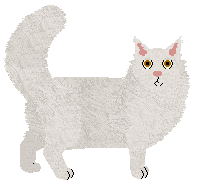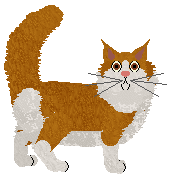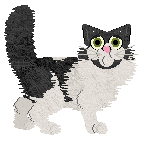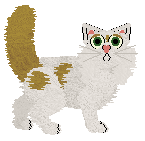Known as the Skogkatt in its native Norway, the Norwegian Forest Cat is a sturdy cat with a distinctive double coat and practical body conformation shaped by its past as a feral village and ship’s cat in Scandinavia. It was the cat known to the Vikings, and spread with them—and thus helped found a wide variety of other breeds, from the Manx to the Maine Coon and Siberian. Like many breeds, it was endangered following World War II, but Norwegian cat fanciers worked hard and preserved it in the form it exists today. It is the official cat breed of Norway, by royal decree. Norwegian Forest Cats only reached North America in 1979—although some will tell you they arrived with Leif Eriksson around the year 1000 when he voyaged to Vinland, in the Gulf of St. Lawrence—and were accepted for championship in 1993.
Although often mistaken for a shelter cat, the Norwegian Forest Cat—called the Norgie or Wegie by its fans—is remarkably distinct in conformation and personality. It is a quiet cat, but active and alert with bursts of energy followed by long naps. A frustrated or bored Norgie can be very destructive if it so chooses, so it is important to keep them occupied and entertained. The Norgie can take up to five years to mature, making it one of the slowest-maturing breeds despite being a medium-sized cat.
Type & judging remarks
Sturdy yet refined, with more refined boning than the other two forest cat breeds and a unique equilateral triangle for its head, and a profile that is straight from the brow ridge to the tip of the nose.






 in any amount. White tailtip is accepted in this breed without fault.
in any amount. White tailtip is accepted in this breed without fault.








